This op-ed originally appeared in The Wall Street Journal.
Can the U.S. succeed in Afghanistan? Not without a sustained, and sustainable, commitment. President Trump’s decision to give Defense Secretary Jim Mattis the authority to add several thousand more U.S. troops to the 8,400 currently deployed is encouraging—but only if it is a first step in a comprehensive approach.
Army Gen. John Nicholson, commander of U.S. and allied forces in Afghanistan, should also receive greater leeway in the use of U.S. and NATO air power. And officials should remain open to the possibility of reconciliation with some insurgents, probably just those that break off from the central Taliban.
An intensified military effort could arrest the gradual loss of territory held by the government in recent years—now estimated by U.S. Central Command at only 60% of the country—and to regain battlefield momentum. Congress should enable all this by appropriating the $5 billion or so a year above current levels that such a strategy will require.
America’s leaders should not lose sight of why the U.S. went to, and has stayed in, Afghanistan: It is in our national interest to ensure that country is not once again a sanctuary for transnational extremists, as it was when the 9/11 attacks were planned there. We have been accomplishing that mission since the intervention began in October 2001. Although al Qaeda in Afghanistan and Pakistan is diminished, it could rebound if given the opportunity. Islamic State could expand its newfound Afghan foothold as well.
The augmented troop levels Mr. Trump has authorized would be only 12% to 15% of the peak U.S. force levels, in 2010-11. The country can sustain that level of commitment. While all casualties are tragic, our losses in Afghanistan would likely remain far fewer than the losses from another major terrorist attack in the U.S.
Today the U.S. and its coalition partners lack the capacity to train and assist Afghan forces adequately in the field. As recently as 2015, the allied forces did not even have a full-time advisory presence for the main Afghan army corps in Helmand province. Largely as a result, the Taliban gained control of much of the province. Nor did the coalition have adequate advisers to help the smaller Afghan formations near Kunduz before that city fell to the Taliban in 2015. It was later liberated only at high cost, especially to Afghan forces and civilians. Restrictions on coalition air power reduced America’s ability to help Afghan partners.
Adding some 3,000 to 5,000 U.S. and allied troops could provide the capacity for several dozen deployable mentoring teams. That is far from enough to assist each Afghan brigade or battalion. But it could support the units that are engaged in the toughest fights and are most intensively involved in rebuilding their capabilities. Supporting those teams logistically and with air power, and providing quick-reaction forces in several parts of the country to help them if they get in trouble, would drive additional requirements for coalition troops into the low thousands.
On the civilian side, President Ashraf Ghani and Chief Executive Abdullah Abdullah need to continue their efforts against corruption, which have shown gradual, modest results to date. With U.S. help, they need to reform the electoral commissions that will oversee parliamentary and presidential elections over the next two years.
Then there is Pakistan, where the U.S. needs a tougher approach. Washington reduced aid to Islamabad by more than half over the past five years. More can be cut. President Trump and Congress could also designate Pakistani individuals and organizations supporting the Taliban and impose sanctions on them. The U.S. could show less restraint in striking Taliban targets within Pakistan.
There are carrots available too: trade concessions, increased aid, more assistance to the Pakistani army’s fight against internal extremists, dialogue with New Delhi to mitigate Pakistan’s worries about India’s role in Afghanistan. But these must come on the condition that Islamabad put greater pressure on the Taliban (whose headquarters is in the Quetta area) and on the Haqqani insurgent network (in North Waziristan). None of this will work unless Pakistani leaders recognize that allowing these groups’ leaders sanctuary on their soil is foolish and dangerous. Given the way extremist groups collaborate in Central and South Asia, that approach will inevitably continue to backfire. After all, the greatest existential threat Pakistan faces is internal extremism, not India.
President Trump’s early approach holds promise. In Afghanistan today, the military needs to revisit the phase of the mission it largely skipped in the years after the surge of 2010-12 or so, when it downsized too quickly and too far. This approach will not achieve “victory” in Afghanistan, after which all troops can be withdrawn. That is an impossible goal in the near-term. But it will be sustainable and it can improve the prospects of shoring up our eastern flank in the broader battle against Islamist extremism—a fight that likely is to be a generational struggle.
The Brookings Institution is committed to quality, independence, and impact.
We are supported by a diverse array of funders. In line with our values and policies, each Brookings publication represents the sole views of its author(s).
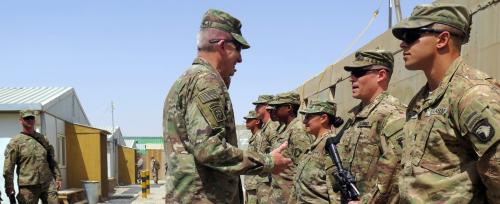

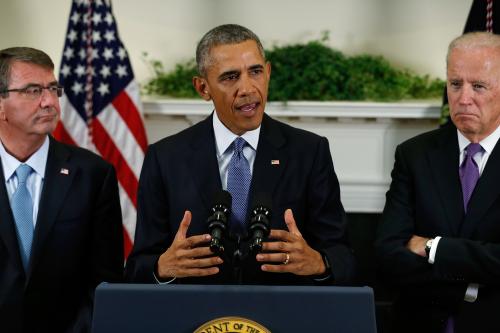
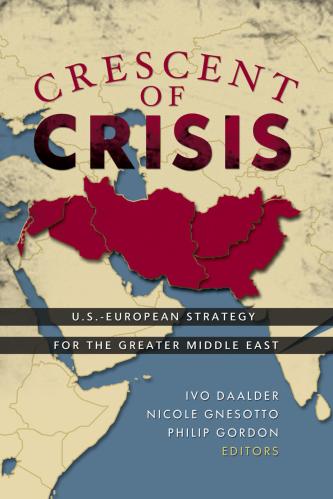
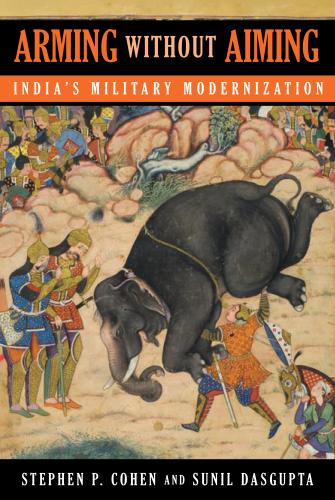



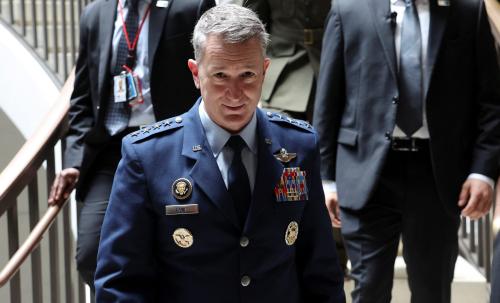

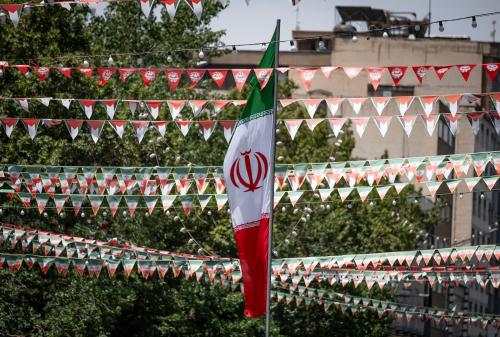
Commentary
Op-edGetting an edge in the long Afghan struggle
June 22, 2017